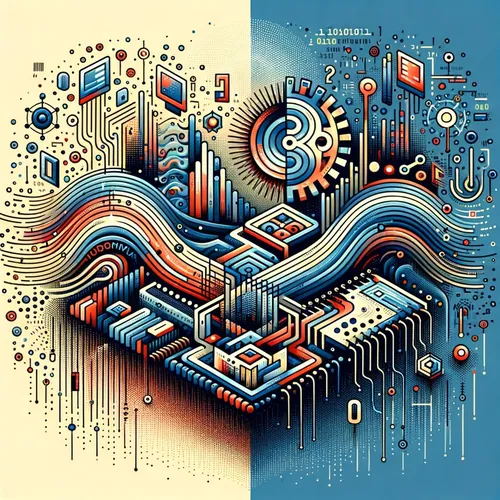Quantum Leaps: Single-Atom Logic Gates, HyperQ Cloud, and the Neglecton's Encore
- Author
- Quiet. Please
- Published
- Mon 25 Aug 2025
- Episode Link
- https://www.spreaker.com/episode/quantum-leaps-single-atom-logic-gates-hyperq-cloud-and-the-neglecton-s-encore--67507106
This is your Quantum Tech Updates podcast.
No long preamble—today, I want you to picture the hum in a quantum lab as the latest hardware milestone reverberates through the field. My name is Leo, Learning Enhanced Operator, quantum specialist, and yes, part amateur dramatist. In the past few days, we witnessed a major advance: scientists at the University of Sydney unveiled an entangling logic gate inside a single atom—a trapped ytterbium ion. This might sound abstract, but let me make it tangible for you.
Imagine classical bits, those binary soldiers that fill your laptop, forever flipping between zero and one. Now step into quantum’s cerebrum: **qubits**, which can juggle zero, one, and all their shadowy combinations thanks to superposition and entanglement. Traditionally, error correction in quantum computing—the lifeblood of reliable quantum operations—has been Achilles’ heel, demanding dozens or hundreds of finicky physical qubits for each logical qubit. But Sydney’s team, building on the Gottesman–Kitaev–Preskill code, packed two error-protected logical qubits in the vibrations of just one trapped atom. Their experiment, published just this week in Nature Physics, slashed hardware overhead and proved you can run a universal gate set inside a single atomic ion.
A moment, please: this is the quantum equivalent of compressing an orchestra into a single violin, and still playing Beethoven’s Fifth. For every quantum engineer staring at server racks bristling with cryogenic plumbing—this leap feels like discovering a shortcut built directly into quantum nature itself.
Hardware isn’t the only theater of quantum drama this week. At Columbia Engineering, researchers rolled out HyperQ, a new virtualization system for quantum cloud computing. Like letting a dozen musicians share a single grand piano—HyperQ promises to transform quantum resource management by supporting multiple concurrent users across one quantum chip, making labs and cloud providers like IBM, Google, and Amazon far more efficient.
But let’s not overlook the wilder side of quantum research. Mathematicians at USC discovered the “neglecton”—a formerly discarded quasiparticle—could finally let physicists piece together universal topological quantum computers. By using a stationary neglecton as an anchor and braiding other anyons around it, the USC team showed we can perform all logic gates through abstract quantum choreography. It’s as if a ghost note in a symphony turned out to be the linchpin for the entire composition.
What does all this mean outside the lab? Just as AI has begun reshaping business, quantum leaps like these will redefine what’s computationally possible—from medical simulations to machine learning and logistics. As Emily Fontaine from IBM recently put it, quantum now stands “on equal footing” with AI in the race for transformative tech.
So if the world feels unpredictable, remember: inside quantum labs, chaos is a principle and order emerges from entanglement. Thanks for joining me on Quantum Tech Updates. If you have questions or want your favorite quantum topic discussed on air, email me at [email protected]. Don’t forget to subscribe, and remember, this has been a Quiet Please Production. For more info, check out quietplease dot AI.
For more http://www.quietplease.ai
Get the best deals https://amzn.to/3ODvOta
